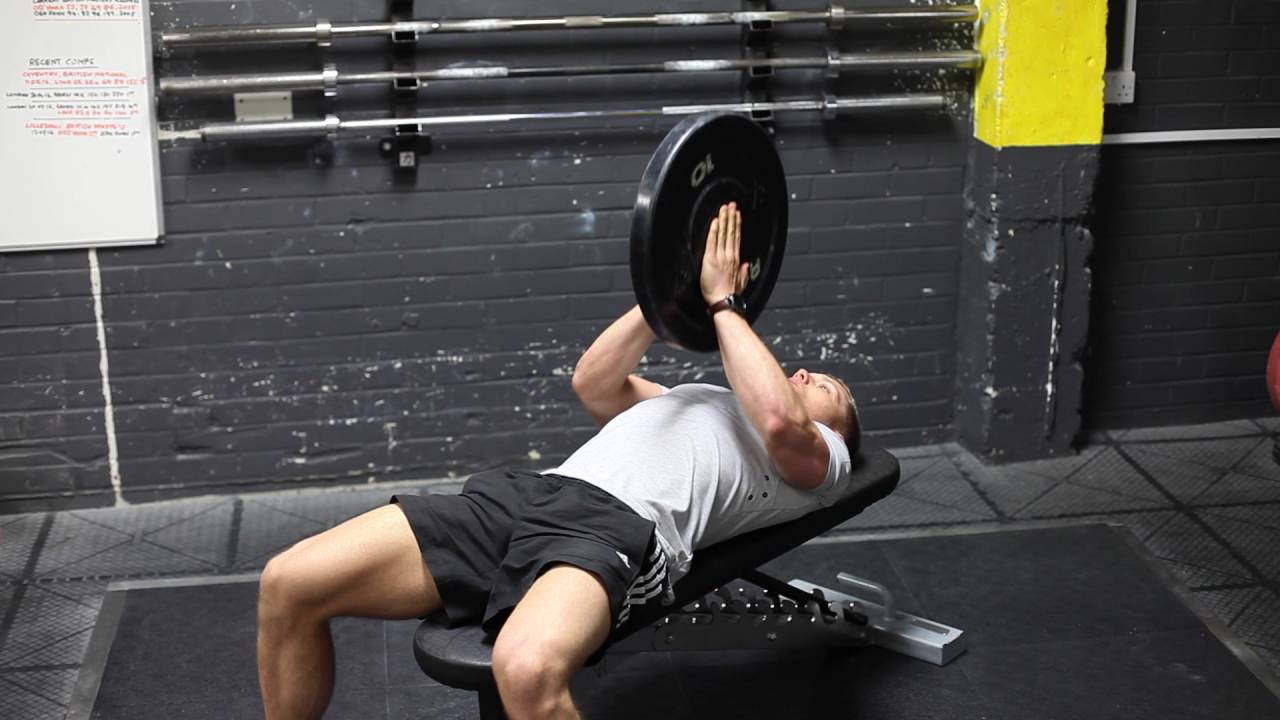A common adage in fitness is that you must feel the muscle working. Feeling a muscle contract means that it is being targeted and worked. However, an exercise that one person can feel might not work the same way for someone else.
One exercise that produces this contraction sensation more effectively than other exercises is the Svend press, which is named after Svend Karlsen, the 2001 World’s Strongest Man.
The Svend Press, also known as the pinch press, is a unique and challenging exercise that works your chest, deltoids, and even your triceps.
The Svend Press trains the chest muscles through horizontal abduction and isometric contraction. While it isn’t primarily a mass-building exercise, it is excellent for muscle definition and improving mind-muscle connection.
- You can also do a Svend press as a superset with a primary chest exercise, like the bench press. In other words, as soon as you complete a set of bench press, you should perform the Svend press.
- You can use it to warm up your chest at the start of a chest workout or to exhaust your chest at the end of the workout.
You can also add variations to the Svend press by using a dumbbell or by doing it on a bench.
So, let’s dive in
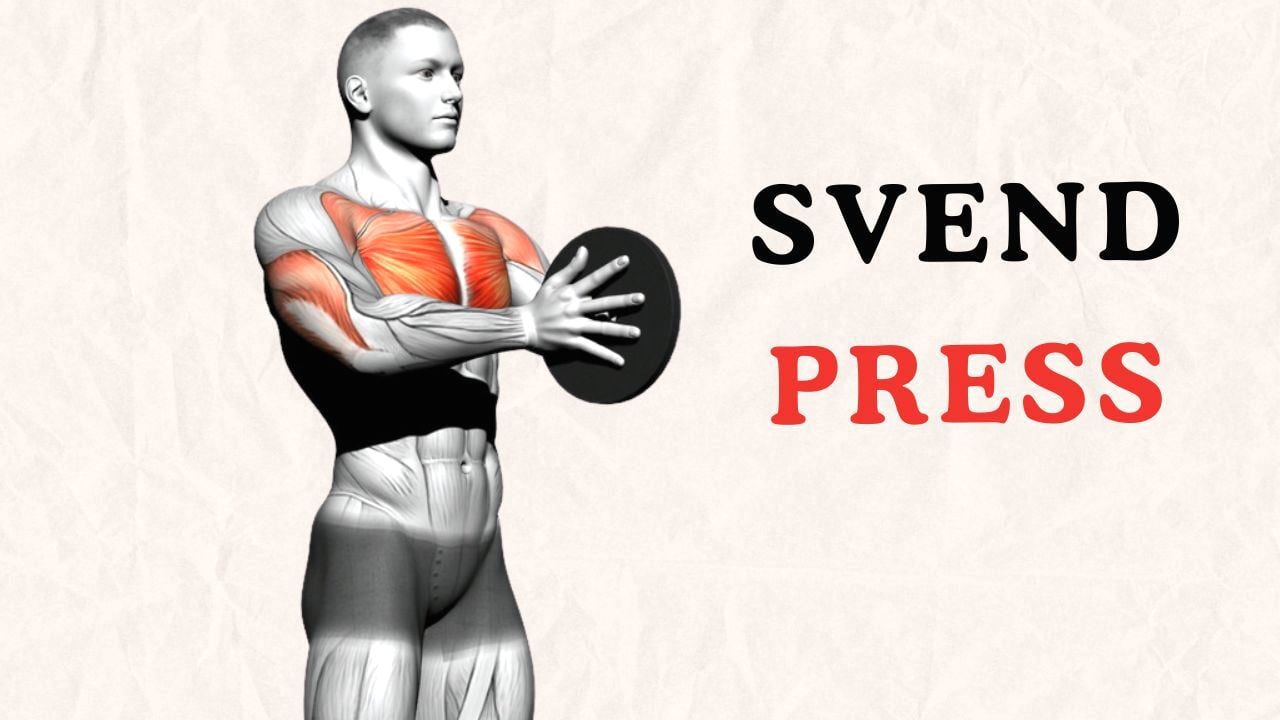
- Svend Press Muscles Worked
- How To Do Plate Svend Press
- Svend Press Proper Form And Technique
- Svend Press Variations
- 1. Lying Svend Press
- 2. Incline Svend Press
- 3. Lying Dumbbell Svend Press
- 4. Standing Dumbbell Svend Press
- What Are The Benefits Of Svend Press
- FAQs
- Does Svend press work?
- What can I use instead of Svend Press?
- Know More About Chest Training
Svend Press Muscles Worked
- Primary Muscles Worked: the chest (Pectoralis Major)
- Secondary and stabilizing Muscles Worked: Deltoids (front deltoids), Triceps, Serratus Anterior, Core Muscles and Forearm Muscles

How To Do Plate Svend Press
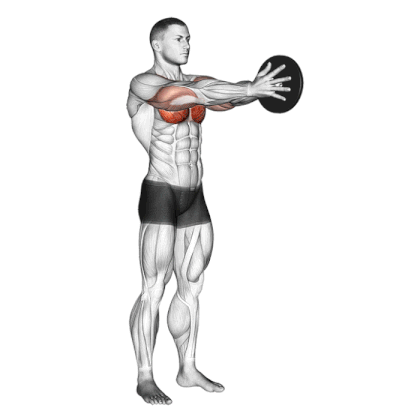
- Stand upright with your feet shoulder-width apart for a stable base.
- Grab 2 weight plates of the same weight (usually light to moderate weight, such as 5-10 lbs each) or with a single plate.
- Your grip should be firm, pressing the plates tightly together.
- Then move the discs away from your body until your arms are straight in front of you, while contracting your pectorals.
- Hold for a second and focus on squeezing your chest muscles.
- Slowly bring the plates back towards your chest.
- Perform the 3-4 sets of 12-15 repetitions.
To Stay Motivated: 150+ Gym Workout Motivational Quotes To Stay Fit
Svend Press Proper Form And Technique
Here are some helpful hints (key elements to consider) on how to perform the Svend chest press exercise safely and effectively.
- Use weight plates that you can comfortably squeeze with your hands.
- Keep the weight pinched between your palms, and do not hold it anyway with your fingers.
- When performing the svend press, try to keep your chest and pecs contracted and under tension throughout the exercise.
- Make sure to squeeze the discs tightly against each other throughout the exercise to engage the pectoral muscles effectively.
- Do not sway back and forth with your body. Moreover, avoid leaning backward or arching your back at all costs.
- This exercise is all about time under tension, so do not rush here and don’t move your arms too fast. The slower you go, the better.
- Try to move in as a straight path as possible and avoid dropping your arms, lifting them up, or swinging up and down.
- Don’t overdo it with weight. A heavier weight will largely suffer your form and technique, and the effort will shift more to your shoulder muscles than your pecs.
- As this exercise depends largely on time under tension, then you should keep your repetitions longer, anywhere from 10 to 20 reps.
- Keep your core engaged, and your abs contracted and tight for the whole exercise.
- The number of reps you should do depends on your goals, whether increasing strength or building muscle mass and endurance. It is best to do 6–12 reps per set for muscle growth. For muscle endurance, do 15-20+ reps per set.
| Level | Sets | Reps | Frequency |
|---|---|---|---|
| Beginner | 2-3 | 8-12 | 1-2 times per week |
| Intermediate | 3-4 | 8-12 | 2-3 times per week |
| Advanced | 4-5 | 8-15 | 2-3 times per week |
Svend Press Variations
The variations are based on the equipment you use and your position. For example, while the original version of this exercise is meant to be done while standing up, it can also be done lying down, kneeling, or even sitting.
Also, you can replace the weightlifting plates with a dumbbell, cable, or even a medicine ball.
1. Lying Svend Press
In this variation, you perform the exercise while lying flat on the bench or on the floor, with your weight on your chest.
The lying position eliminates the need to stabilize your core and lower body, letting you focus solely on your chest muscles.
It is also a great option for those struggling with shoulder discomfort during the traditional standing Svend Press.
How To Do
- Lie down flat on the bench or on the floor. Press the plate and position them in the centre of your chest.
- Press them up and away from your chest to keep the tension a straight line.
- Lower the weights to your chest and hold the tension between the plates.
- Keep squeezing the weight and contracting your chest throughout the exercise.
- Once your arms are completely extended, pause the movement for a few seconds and then slowly return down.
2. Incline Svend Press
When you perform the Svend Press on an incline bench, your focus shifts more to the upper portion of your pectoral muscles and front deltoid.
Since you are working against gravity at an angle, you must focus on controlling the movement and maintaining proper form.
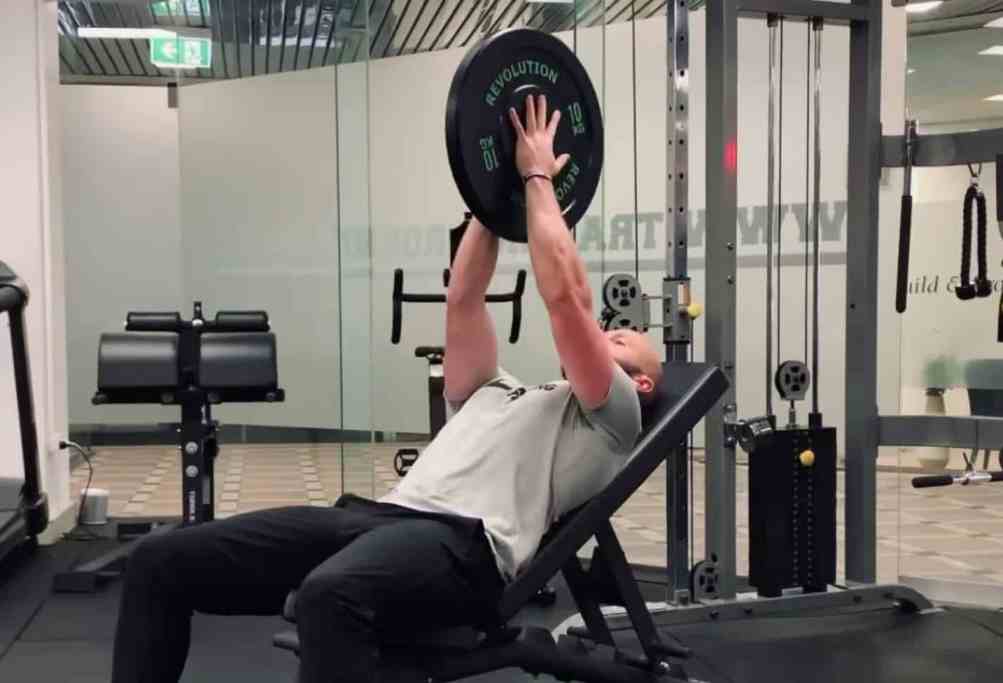
How To
- Grab a weight plate that you are able to handle.
- Get a workout bench and raise it to an incline.
- Bring the plates to the middle of your chest and extend your arms forward and slightly upward.
- Keep squeezing the weight and contracting your chest throughout the exercise, and then bring it back inward.
3. Lying Dumbbell Svend Press
In this variation, you will use a dumbbell or even two to perform the exercise.
Dumbbells add an additional level of difficulty by introducing independent movement for each arm. This means that both sides of your chest must exert equal effort to correct any muscle imbalances and enhance symmetry.
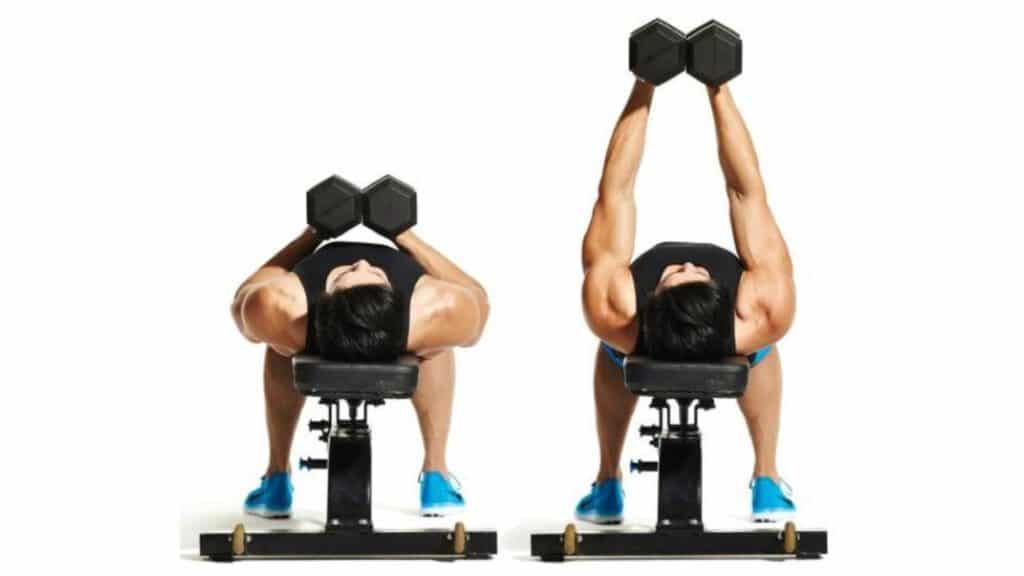
How To Do
- Lie down on a bench and grab a dumbbell.
- Press the dumbbells together, position them in the centre of your chest, and press them up and away from your chest.
- Maintain the tension between the dumbbells as you lower the weights to your chest.
- Keep squeezing the weight and contracting your chest throughout the exercise.
- Once your arms are completely extended, pause the movement for a few seconds and then slowly return down.
4. Standing Dumbbell Svend Press
The single dumbbell svend press has various unique benefits. You only need a single dumbbell to do this exercise, so it’s easy for people who don’t have a lot of gym equipment. You can easily switch to a heavier or lighter dumbbell.
It improves your mind-muscle connection and helps you better engage and activate your chest muscles.
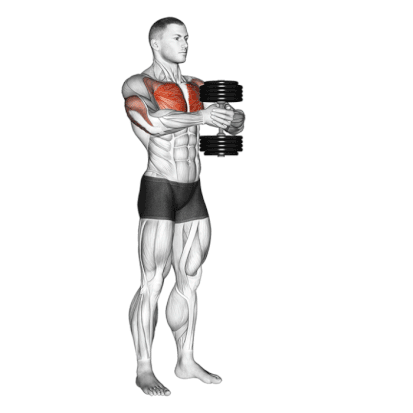
How To Do
- Stand with your feet shoulder-width apart and your back straight.
- Hold a dumbbell with both hands at chest height.
- Squeeze the dumbbell tightly between your palms.
- Slowly extend your arms straight out and slightly up until your elbows are completely locked out.
- Make sure you’re contracting your chest as hard as possible.
- Hold the position for a second or two.
- Slowly lower the dumbbell back to your chest.
What Are The Benefits Of Svend Press
- Excellent for building upper body size and endurance.
- The Svend chest press is a budget-friendly exercise that doesn’t require special equipment. It is a good option for a home chest workout.
- The Svend chest press exercise will also help you enhance the mind-muscle connection.
- The horizontal position places less strain on the shoulder joints than an upright bench press using a barbell.
- It’s a different way to train your chest and front deltoids. Usually, we train our muscles eccentrically, meaning by movement, either by pulling or pushing heavy objects. Well, the Svend press trains your muscles isometrically.
- Overcoming a bench press plateau.
- It can be used as a great finisher to your chest workout
FAQs
Does Svend press work?
The svend press works the chest workout to increase muscle hypertrophy and create chiseled and defined pectorals. The Svend press is a great way to avoid strains on your shoulder joints and rotator cuff while increasing your chest muscle growth.
What can I use instead of Svend Press?
Many other exercises are better than the Svend press for strengthening the chest muscles. Below are three alternative exercises to the Svend press that help increase chest strength and muscular size.
- Dumbbell Floor Press
- The Landmine Chest Press
- Floor Press with Bands
Know More About Chest Training
- 10 Best Chest Workout With Dumbbells at Home or Gym
- Incline Chest Fly: Benefits, Muscles Worked, Form
- Upper Chest Cable Exercises for Bigger & Stronger Chest
- Lower Chest Dumbbell Exercises to Build Muscle & Definition
- 12 Chest and Triceps Workout With Dumbbells for Muscle

Manish is a NASM-certified fitness and nutrition coach with over 10 years of experience in weight lifting and fat loss fitness coaching. He specializes in gym-based training and has a lot of knowledge about exercise, lifting technique, biomechanics, and more.
Through “Fit Life Regime,” he generously shares the insights he’s gained over a decade in the field. His goal is to equip others with the knowledge to start their own fitness journey.

